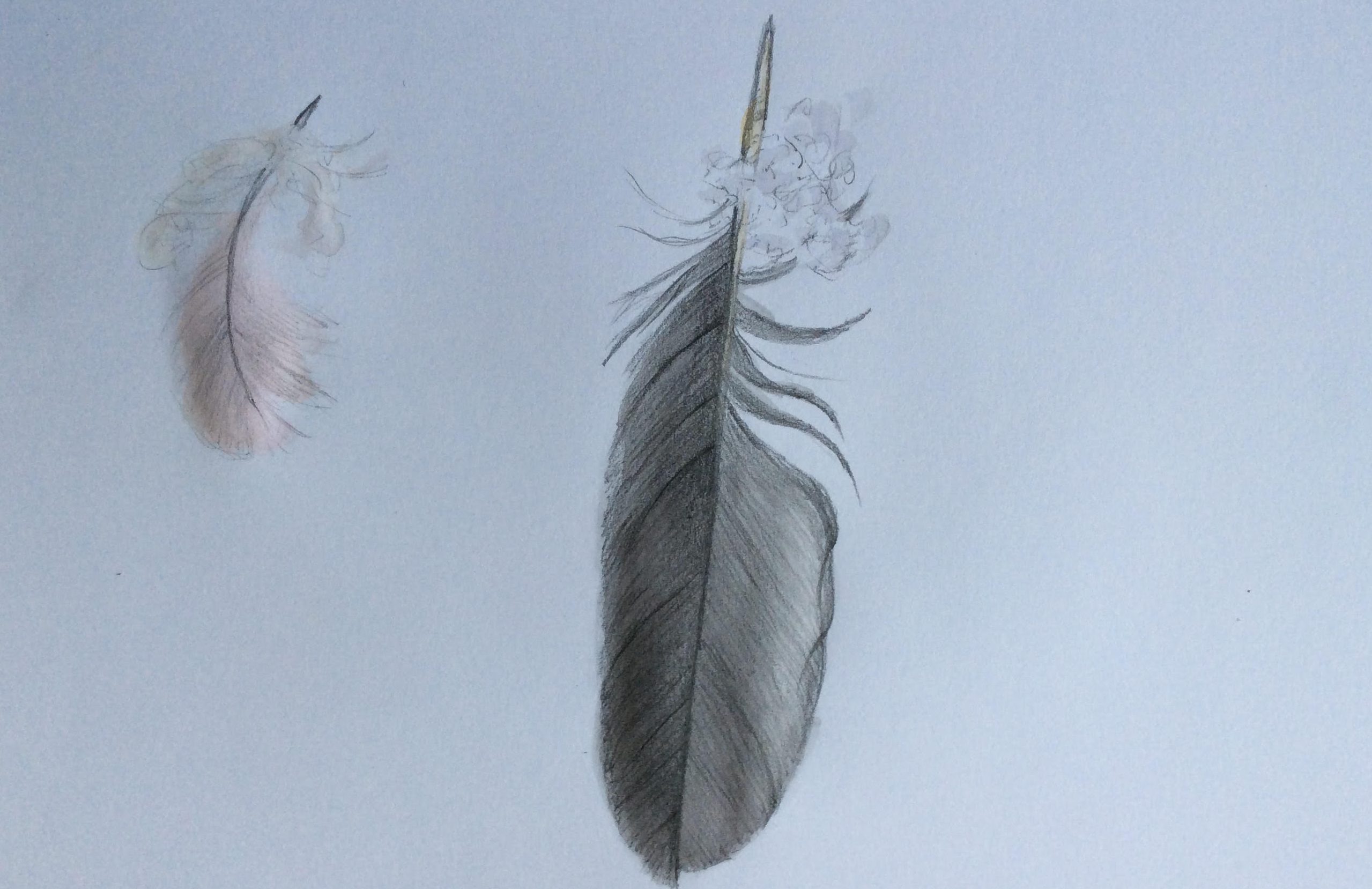Day 49: The Calls of Nature
Day 49: May 14, 2020
Global cases: 4,521,989; Deaths: 303,082
Egypt cases: 10,829; Deaths: 571
Richard Hoath
Senior Instructor
Department of Rhetoric and Composition
It’s May and here just north of London lockdown continues apace. When I say apace, I mean snail’s pace and perhaps Brown-lipped Snail pace. This is a common, boldly banded species in the UK and I managed to rescue one from a wet pavement the other day as opposed to the larger Garden Snail I rescued from a bird bath not long after. In lockdown the naturalist seeks solace in the most humble of creatures. Author Nicholas Evans wrote movingly of animal relations in his novel The Horse Whisperer. In the village of Harpenden I am the snail whisperer.
Truth to tell there is plenty around. There is a pair of Grey Wagtails on the local pond and the pond itself is stuffed with Common Frog tadpoles and predatory Smooth Newts. My Rooks, the large crows I wrote about last month that are nesting in a colony of eleven twiggy nests outside the (closed) village pub, continue to flourish and flourish noisily.
If the local scope is limited, social media has allowed me to keep abreast of things further afield. From Florida I was sent a recording of a mystery bird call, a night bird call. It was a Downy Woodpecker and not a call but the bird drumming. In Spring woodpeckers of many species make their presence known not by singing but by drumming, hammering away in short, intense bursts at a tree branch and when the branch is dead and hollow that sound is amplified and audible from a great distance. Its like an avian open mic. There are no Downy Woodpeckers in and around London but the superficially similar Great Spotted Woodpecker is making itself very apparent from a huge oak tree in the small park. In Egypt the country’s only woodpecker, save for the rather peculiar migrant Wryneck, the Syrian Woodpecker will be doing much the same in north eastern Sinai, its only Egyptian toehold.
From Egypt, I got a wonderful series of bat photographs taken by naturalist Watter El Bahry in his family home in Port Said. These were Kuhl’s Pipistrelle Bats, a small species and one of five pipistrelles recorded from Egypt. It is also the most widespread though not recorded from south of Luxor. Kuhl’s Pipistrelle weighs up to 8.5 grams with a body length of up to 9cm a third of which is tail confined within the flight membrane. Hardly huge but it is Egypt’s largest pipistrelle. Watter’s photos clearly show the darkish brown fur, slightly paler below and the structure of the ear. Ear structure is key in bat ID. Kuhl’s Pipistrelle seems to be a common species in Cairo and around dusk and later they can be seen flitting around my apartment in Garden City.
In this case ID has been not by sight but by using a bat detector, a box of electronic trickery that lowers the ultrasonic squeaks of the bats to an audible frequency. Here in Harpenden early evening sees me brandishing my bat detector outside the backdoor, frequency set at 45 Hz scanning the twilight for, in this case, Common Pipistrelles. Early evening, every evening such is my crepuscular lockdown ritual.
For The Caravan‘s previous diary entries in Arabic and English go to our COVID-19 Special Coverage page.
From the Fayoum, and this time from Neil Hewison author of The Fayoum: History and Guide I have had some fabulous images taken of Lake Qarun. Most notable were photographs of four Demoiselle Cranes at the western end of the lake. The Common Crane is a spring migrant flying through Egypt as late as mid-May sometimes in flocks of many tens even hundreds. It is a large bird, with cranes the description is often ‘stately’, with long necks held out in flight, and a pale grey in colour with black necks and white and crimson markings on the head. It is a reasonably common bird. The Demoiselle Crane is rather smaller – 96 cm in length as compared to 114in the Common – similarly grey and black but lacking any red on the head and with a prominent white tuft running from behind the eye. It is much rarer with very few recent records. I have only recorded it once from Egypt, a single at the sewage ponds in Sharm El Sheikh in the early 90’s. Neil’s record this April of four is important and as of the time of writing one is still there. The others will have headed north to East European breeding grounds.
Also from the Fayoum is a record of a Tessellated Water Snake. This snake species is slender, up to 130cm in length and variable in colour but in the specimen photographed a dark grey-green with darker banding and spotting that give the species its alternative name of Dice Snake. The photographs show the head clearly and this was important as the question was, as it so often is with snakes, is it venomous? The head shape said no and the scale pattern confirms the ID.
Not all natural history has the scale, glamour and nobility of cranes, the nocturnal mystery of bats, or the frisson of snakes. But sometimes the most prosaic can provide the most interest. My sister lives in Germany near Munich and is too in lockdown and like many in lockdown she has been using the time to spring clean. Yesterday she Facetimed me not an unusual occurrence in these times save for the fact that it was morning and I was getting around the toast and marmalade that is breakfast. Up the stairs of her Bavarian house I was lead. What is all this? she asked as the camera revealed a pile of what looked like knobbly grey cartridge cases and bits of brown skin.
O joy! Toast and marmalade were forgotten, coffee went undrunk! This was a wasp nest but no ordinary wasp nest, this was the nest of a mud-dauber wasp. Unlike the more familiar social wasps such as the Oriental Hornet that build a paper nest from chewed wood pulp, mud-dauber wasps build nests from wet mud and lay an egg in each cell. Before sealing the cell, the wasp provides each egg with an insect or more commonly a spider, that is immobilized by venom to keep it fresh and which provides the wasp larva with food. This is how it spends the winter. In spring the new adult emerges from the pupal skin, breaks the clay seal and emerges from its cell and this debris is what my sister found.
But it gets even better! She also found the rather desiccated and very dead corpse of an assassin bug. Up to 4 cm long assassin bugs are well named. Unlike many members of the order Hemiptera, the True Bugs, assassin bugs are predators and this terrific specimen from Bavaria showed how it went about its business the prey in this case the mud-dauber wasps. The small, narrow head was clear with a short, stout proboscis. The assassin bug uses this to pierce its prey and dissolve it into a gloppy insect soup that it can then suck up like a protein shake. This may sound very gruesome, but it should also be noted that assassin bugs are exceptions in the insect world in providing parental care for their eggs and nymphs. I e-mailed my sister later – “This has been the BEST lockdown morning EVER!!!! :))”.
South Germany this may be, but mud-dauber wasps and assassin bugs are also found in Egypt and worth looking out for as even the seemingly mundane can provide a marvelous back story. I can remember being called over to a balcony in Zamalek where a friend was very concerned as her treasured roses were being eaten, the culprit leaving beautifully neat semi-circular bites out of her precious leaves. These were the hall marks of a species of leaf-cutter bee, an insect with a life history so deeply fascinating that a few neat holes in the rose leaves was a small price to pay.




